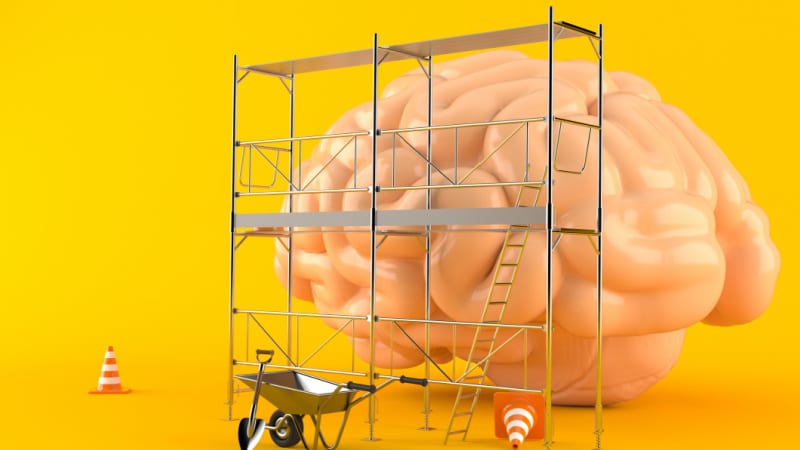Education is a transformative journey that requires effective teaching methods to ensure students’ success. One such method that has proven to be highly effective is scaffolding. Scaffolding in education involves providing targeted support and guidance to students as they tackle new and challenging concepts. By offering the right level of assistance, educators can empower learners to overcome obstacles, develop critical thinking skills, and achieve their full potential. In this article, VTJ will help you explore the concept of scaffolding in education, and its significance in facilitating learning, and delve into various strategies and activities that can be implemented to optimize the scaffolding process.
>>>Read more: Practical Tips to Deal with Negative Teacher
>>>Read more: 15+ Ways to build confidence in your ESL students
What is Scaffolding in Education?

What is Scaffolding in Education?
Scaffolding in education refers to a teaching approach where educators provide temporary support and guidance to students as they learn new concepts or skills. Much like the scaffolds used in construction to provide a framework for workers, educational scaffolding offers a structured framework to help students achieve a deeper understanding of challenging subjects. This support is gradually withdrawn as students gain confidence and mastery over the material, allowing them to eventually work independently. Scaffolding is rooted in the idea of the Zone of Proximal Development (ZPD), a range of tasks that a student can’t complete alone but can with the right level of assistance. It encourages active learning, critical thinking, and problem-solving by tailoring instruction to individual students’ needs and fostering their autonomy and growth as learners.
>>>Read more: What is TPR (Total Physical Response)? How can I use it?
>>>Read more: 14 Types of teaching methods for an effective lesson
Scaffolding vs. Differentiation
Differentiation, in contrast to scaffolding, involves tailoring lessons to individual students based on their abilities and preferences. Instead of having all students follow the same steps to master a concept, differentiation offers various types of lessons to cater to the diverse needs of students. Here’s a comparison of scaffolding vs. differentiation:
| Scaffolding | Differentiation |
| Scaffolding involves providing temporary support and guidance to students as they work on tasks that are slightly beyond their current skill level. | Differentiation involves tailoring instruction to meet the varying learning needs, interests, and abilities of individual students. |
| The focus of scaffolding is on gradually helping students develop the skills and knowledge needed to complete tasks independently. | The focus of differentiation is on adapting teaching methods, content, and assessment to accommodate diverse student profiles within a single classroom. |
| Educators offer structured assistance, such as modeling, prompts, or hints, to help students overcome challenges and achieve a deeper understanding. | Differentiation encourages a flexible and personalized approach to teaching, recognizing that students may require different pathways to reach the same learning goals. |
| The ultimate goal of scaffolding is to empower students to become more independent learners by building their confidence and competence. | Differentiation seeks to create a learning environment where each student’s strengths and needs are acknowledged and supported. |
>>>Read more: What is blended learning? Types, Examples & Benefits?
>>>Read more: Different types of institutions to teach English in Vietnam
Benefits of Scaffolding in Education
Scaffolding in education offers a multitude of benefits that contribute to enhanced learning experiences and student development. Here are some of the key advantages of incorporating scaffolding techniques in the classroom:
- Supportive Learning Environment: Scaffolding creates a supportive learning environment where students feel comfortable taking risks and making mistakes. It provides the necessary guidance and assistance to help students overcome challenges and build confidence in their abilities.
- Gradual Skill Development: By breaking down complex tasks into smaller, manageable steps, scaffolding allows students to gradually develop their skills. It ensures that students have a solid foundation before moving on to more advanced concepts, promoting a deeper understanding of the subject matter.
- Active Engagement: Scaffolding encourages active engagement in the learning process. It promotes student participation through interactive activities, discussions, and hands-on experiences, fostering a deeper level of understanding and retention of information.
- Promotes Critical Thinking: Scaffolding prompts students to think critically and problem-solve independently. It encourages them to analyze information, make connections, and apply their knowledge in real-world contexts, enhancing their cognitive skills and higher-order thinking abilities.
- Fosters Independence: As students progress through scaffolding, they gradually gain independence and become self-directed learners. The support provided by scaffolding helps students develop the necessary skills and strategies to tackle challenges on their own, fostering a sense of ownership and autonomy in their learning journey.
>>>Read more: Guide on How to Teach Vocabulary Effectively for Teachers
The Instructional Scaffolding in Education Process

The Instructional Scaffolding in Education Process
The instructional scaffolding in education process begins with the teacher assessing students’ prior knowledge and determining the learning objectives. Based on this assessment, the teacher develops a plan to guide students from their current understanding to the desired learning goals.
>>>Read more: 120+ High and Middle School Debate Topics for Students
To initiate the scaffolding process, the teacher first explains the concept or problem at a level that matches the students’ current knowledge. They may demonstrate problem-solving techniques or provide strategies for completing a task. Once the foundation is set, the scaffolding begins.
>>>Read more: How To Write a Curriculum in 8 Steps: A Complete Guide
During scaffolding, the teacher provides support to students by breaking down directions into smaller, manageable steps. They may verbally guide students through the task, offering assistance and clarifications as needed. Collaborative learning is encouraged by grouping students together, allowing them to discuss the task and provide support to one another. Additionally, the teacher may provide models or examples of the task to provide additional information and guidance. Throughout the process, the teacher offers tips and tricks to help students navigate the task effectively.
>>>Read more: 4 Types of Learning Styles: How to Use VARK Model in Teaching
By implementing these scaffolding strategies, the teacher ensures that students receive the necessary support and guidance to progress towards mastering the learning objectives. As students become more proficient, the supporting is gradually removed, allowing them to work independently and confidently.
>>>Read more: How To Write a Lesson Plan in 6 Steps: The Complete Guide
4 Strategies for Scaffolding in Education
4 Strategies for Scaffolding in Education
Show and Tell
- Strategy overview: The “show and tell” strategy involves demonstrating or modeling a concept or skill before asking students to try it themselves. The teacher can use visual aids, demonstrations, or multimedia presentations to make abstract concepts more tangible and understandable for students.
- Implementation: Educators can use diagrams, charts, videos, or real-world examples to visually represent complex ideas. These visual aids help students visualize concepts and enhance their understanding by providing concrete references.
- Benefits: Visual representations cater to different learning styles, making it easier for students to grasp challenging content. It also fosters engagement and retention by creating memorable associations.
>>>Read more: 20+ Effective Classroom Management Strategies and Techniques
Making Real-Life Connections
- Strategy overview: This strategy encourages students to connect new information to their own experiences, interests, or real-world events. It bridges the gap between theoretical concepts and practical application.
- Implementation: Educators can ask guiding questions that prompt students to relate the topic to their lives or current events. Group discussions and personal reflections can facilitate this process.
- Benefits: By linking learning to personal experiences, students find the content more relatable and meaningful. This strategy promotes critical thinking and deepens comprehension.
>>>Read more: How to Teach Writing Skills to Students Effectively in 8 Simple Steps
Start with Vocabulary
- Strategy overview: Starting a lesson by introducing key vocabulary and concepts provides students with a foundational understanding before delving into more complex ideas. This pre-teaching approach prepares students for the upcoming content.
- Implementation: Teachers can present key terms, definitions, and essential concepts at the beginning of a lesson. This provides a roadmap for students and aids in comprehension.
- Benefits: Pre-teaching vocabulary ensures that students are equipped with the necessary terminology to engage with the subject matter. It reduces cognitive load and enhances overall learning efficiency.
>>>Read more: 10+ Strategies of How to Teach Reading Comprehension in the Class
Use Visual Aids
- Strategy overview: Visual aids such as mind maps, diagrams, charts, and infographics help students organize information, visualize relationships, and comprehend complex structures.
- Implementation: Teachers can create or provide visual representations of the content being taught. Mind maps, for example, can outline the main ideas and subtopics, showing how they connect.
- Benefits: Visual aids offer a clear overview of the material, breaking down complex ideas into digestible parts. They accommodate diverse learning styles and support long-term retention.
>>>Read more: 5 Types of Teaching Styles (Their Pros & Cons)
3 Scaffolding Learning Activities in Education
Scaffolding in education offers a multitude of benefits that contribute to enhanced learning experiences
Fish bowl
The fishbowl activity involves dividing the class into two groups: an inner circle and an outer circle. The inner circle consists of a small group of students who actively participate in a discussion or activity, while the outer circle observes and takes notes. This activity promotes active listening and critical thinking skills. After the inner circle completes the task, the outer circle can provide feedback, ask questions, or share their observations. This activity encourages collaboration, reflection, and deeper understanding of the topic.
>>>Read more: Why Students Get Bored & How to Engage Bored Students in the Class
Think-aloud
The think-aloud strategy involves the teacher or a proficient student verbalizing their thought process while solving a problem or completing a task. By explicitly articulating their thinking, students can understand the steps and strategies used to approach a problem. This activity helps students develop metacognitive skills, as they become aware of their own thinking and can apply similar strategies independently. Think-alouds provide a model for problem-solving and help students internalize the cognitive processes required for successful completion of a task.
>>>Read more: 21+ Best Classroom Management Books for Teachers
Mind maps and concept maps
Mind maps and concept maps are visual tools that help students organize and connect information. Mind maps are diagrams that start with a central idea and branch out into related concepts or subtopics. Concept maps, on the other hand, illustrate relationships between different concepts using nodes and connecting lines. These activities encourage students to actively engage with the content, identify key ideas, and establish connections between them. Mind maps and concept maps promote critical thinking, comprehension, and the ability to see the “big picture” of a topic.
>>>Read more: 22+ SMART Teacher Goals Examples in 2023
>>>Read more: How to Teach Critical Thinking Skills to Students
FAQ
What are the 4 main types of scaffolds?
Four main types of scaffolds include Independent Scaffolding, Single Scaffolding, Double Scaffolding, and Needle Scaffolding.
What are the three main features of scaffolding?
Collaboration between teacher and student, breaking tasks into manageable steps, and gradually reducing support as the student becomes more proficient.
What is the opposite of scaffolding in education?
The opposite of scaffolding in education is “sinking” or “rescuing.” This refers to a teaching approach where students are not provided with appropriate support or guidance, leading to frustration, disengagement, and a lack of progress.
Are you facing difficulties in finding and securing teaching positions in Vietnam? Are visa procedures causing you trouble? Feeling overwhelmed and directionless upon your arrival in Vietnam for teaching assignments? Don’t worry, VTJ’s English Teaching Placement in Vietnam (EPIV) Program 2024 provides comprehensive support to solve ALL the matters.
👉👉👉 Click HERE to request free consultation





